Our valley is home to two jays, members of the corvid family, (which includes crows,
ravens, magpies and so on). These are the Canada Jay, formerly called the Gray Jay, and the
Steller’s Jay. I wrote an article about Canada Jays in the fall of 2017 for this blog.* This time
let’s look at the other jay, the Steller’s Jay, which is BC’s Provincial bird. It is named after
the first European to document sighting the bird, on an island in what is now known as
Alaska. This was the German zoologist and physician Georg Steller, who accompanied the
Danish cartographer Vitus Bering on the 1741 trip to the strait now bearing Bering’s name.
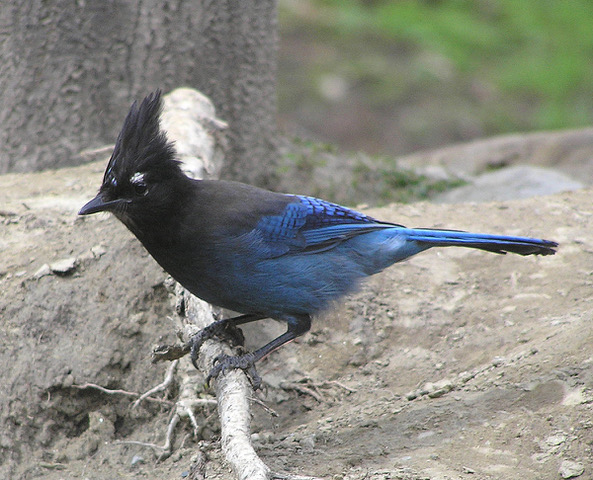
Steller’s Jays are easily recognized. The birds are blessed with a conspicuous black crested
head on an iridescent deep blue body. In the Interior some white markings can often be
seen on their faces, whereas coastal birds are darker. Young birds, too, are darker than
their adult parents. They are about 11–12.5” / ~28-32 cm in length and are often casually
but incorrectly called ‘Blue Jays’ locally. Found only in the western part of Canada and the
US, they are usually seen in coniferous and mixed forests but in our valley can also often be
seen in the winter months lower down, in valley bottom back gardens or parks or pockets
of woodland.
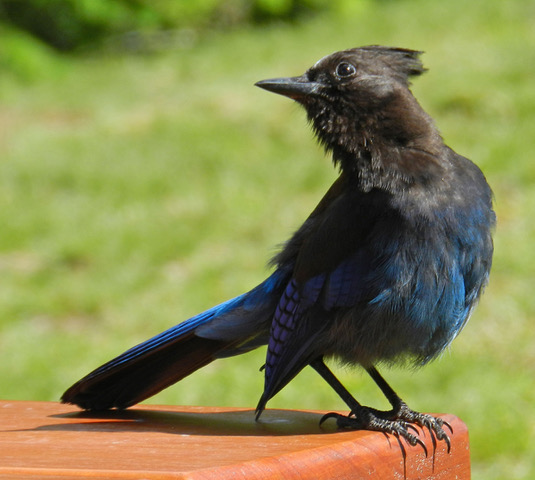
Like Canada Jays they are often found scavenging at campsites and along roadsides. They
seem to be less bold than their Canada Jay kin, however, and will fly when humans
approach too close. What are they eating? They are pretty opportunistic taking acorns, pine
nuts, fruit, insects, spiders and small vertebrates such as lizards or rodents. They often
appoint one bird as lookout to keep watch while others in the flock feed nearby.
Intelligently they can store food to eat later and they can remember the several locations
where they have stored it.
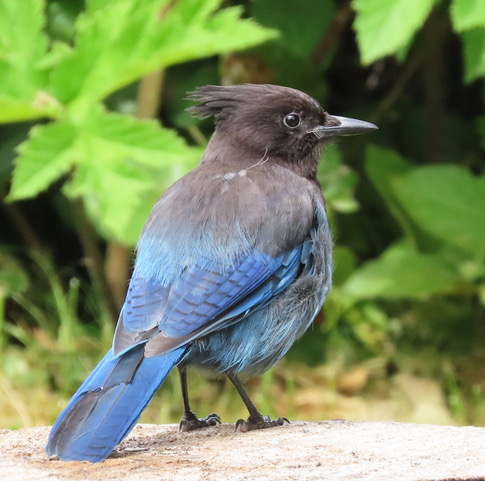
And did you know that they are partial to dog kibble? I once watched a pair raiding the
feeding bowl of a dog at an adjacent campground to ours. For about 20 minutes the pair
made frequent visits, cramming as many pieces of kibble as they could in their mouths
before flying off to hide them elsewhere and returning for more. I wonder what the dog and
its family thought when they returned to their campsite!
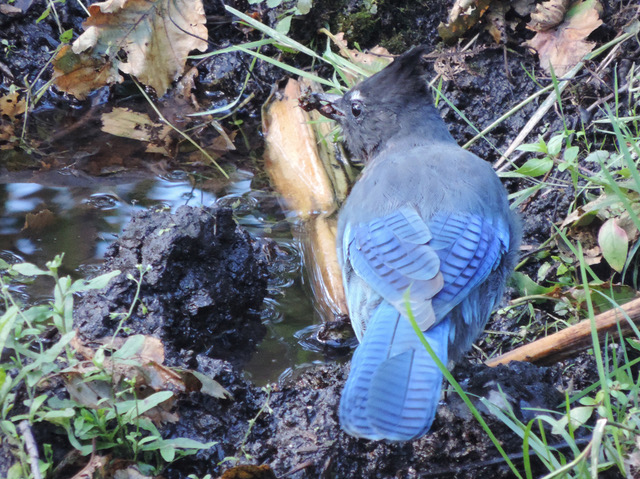
You might see a Steller’s Jay anywhere in the west from coastal Alaska southwards to
Mexico – but strictly in the west. The Blue Jay of the east has a similar form but quite
different plumage and voice and only occasionally turns up in our valley. Where the ranges
of the two species overlap in the Rockies, they are known occasionally to interbreed.
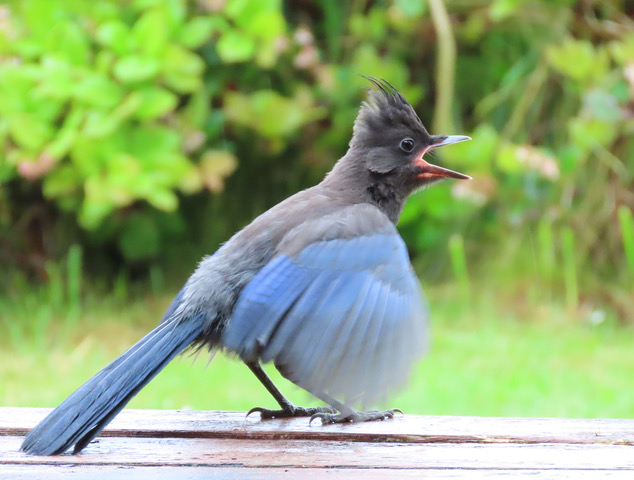
Steller’s Jays build a bulky nest of twigs and mud, usually close to the trunk of a tree. Laying
2 – 6 eggs they raise one brood annually between March and June. They are noisy birds
with a harsh descending call and some other vocalisations none of which could be termed
musical. They are quite accomplished at mimicking other birds such as Red-tailed Hawks or
European Starlings.
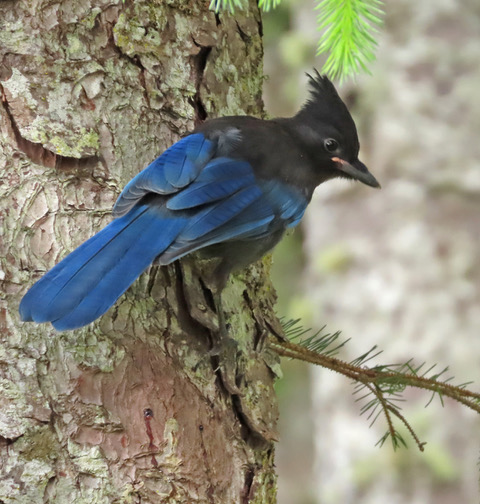
These birds are conspicuous and easily spotted. Keep your eyes open during these colder
winter months and you’ll probably see a few Steller’s Jays here and there. Some of the
colouring of the bird’s back and wing feathers is strikingly beautiful when it catches the
light. So even if they can’t sing musically, at least they can look stunning, in the right light!
*(The article is also reproduced as the final chapter in volume 1 of “Which Bird Might I see
Today?” the book, available from the Museum or through my website at
www.pamlaingkelowna.ca ).
Pam Laing
Okanagan birder







Mountain Man
Thank for the great article. My wife and I share a common love of Stellar Jay. We acquired 2 life size concrete Steller Jay many years. I am currently restoring them to their original majesty. Cheers!